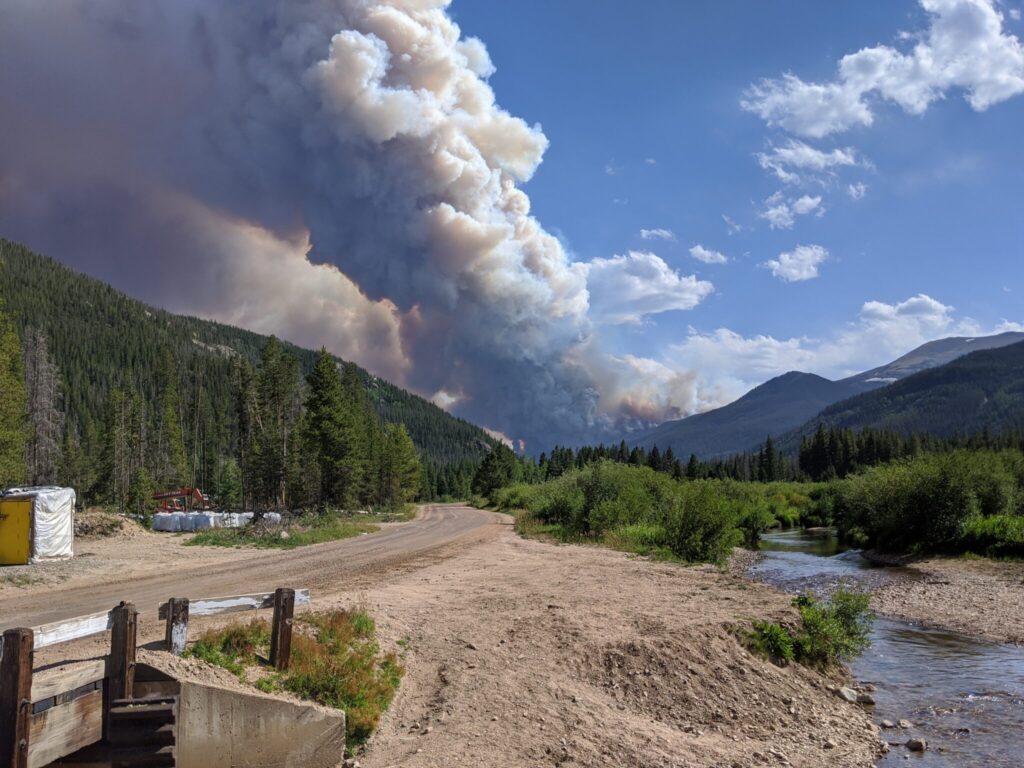The third edition of the Climate Change in Colorado report published on Jan. 8, 2024. Created by researchers at Colorado State University, the new multi-chapter report combines and synthesizes relevant climate science information to help inform future management and planning of the state’s water resources.
Previous editions of the report in 2008 and 2014 were among the first state-level climate change assessments ever conducted in the U.S. The new report was created by researchers at CSU in the Department of Atmospheric Science within in the Walter Scott, Jr. College of Engineering. Funding and support came from the Colorado Water Conservation Board and Denver Water.

CSU Research Scientist Becky Bolinger served as the lead author for the report and is the assistant state climatologist for Colorado. She said the report describes trends in Colorado’s climate and hydrology, interprets model-based projections for the future, and considers potential hazards stemming from changes in climate. It also verifies projections found in earlier reports and updates them to extend out through 2050 and beyond.
What does the report say about future temperatures in Colorado?
The report notes that temperatures in Colorado have been warmer than average in the last few years and that the models are confident in predicting that trend to continue around the state well into the future. In general, statewide annual average temperatures warmed by 2.3 degrees Fahrenheit from 1980 to 2022 with the greatest amount of warming happening during the fall season.
Bolinger noted that the observed warming trend is strongly linked to the overall human influence on climate and that further and significant warming is expected in all parts of Colorado – in all seasons – over the next several decades.
“Southwestern and south-central Colorado have experienced the largest magnitude of warming and will continue to see hotter temperatures than the rest of the state in the future,” she said. “By 2050 Colorado statewide annual temperatures are projected to warm by 2.5 to 5.0 degrees Fahrenheit compared to the late 20th century and 1 to 4 degrees compared to what we see today.”
What does the report say about future changes in Colorado’s water resources?
Colorado has seen persistent dry conditions in the 21st century with four of the five driest years in the total 128-year record occurring since 2000, but future trends in precipitation remain uncertain. Despite the uncertainty, the report notes that warmer temperatures will likely reduce water supply. Models predict a 5-30 percent reduction in both stream flow volume and snow-water equivalent – the amount of liquid water that would result if the snowpack were melted down – by 2050 due to future warming.
“Snow-water equivalent during the twenty-first century has already been 3 to 23 percent lower than the 1951-2000 average across Colorado’s major river basins,” Bolinger said. “Future warming will continue that trend and the seasonal peak snowpack date is actually projected to occur earlier in the spring than it does now by 2050. We would need a large overall increase in precipitation to offset the effects of warming there – an outcome that appears unlikely.”
What does the report say about future climate extremes and hazards in Colorado?
For the first time the report deals directly with climate extremes and hazards – noting that warming temperatures have and will continue to increase the frequency and severity of heat waves, drought and wildfires in the state. The report touches on multiple hazard categories but specifically predicts that future warming will lead to an increase in wildfire events with a greater chance for them to occur in the fall, winter and spring months than we are seeing now.
